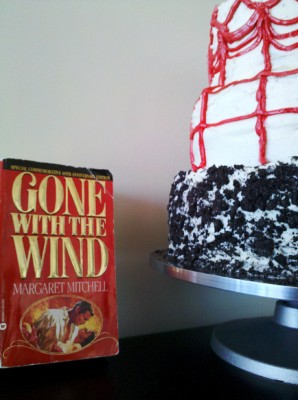Reviewer: Emera
Date read: 7.13.2014
Book from: Library
Mira Grant’s Parasite is one of the 2014 Hugo novel nominees, and is a competent but bland thriller set in a near-future where, in answer to the hygiene hypothesis, nearly everyone is implanted with a genetically engineered tapeworm. The implants confer systemic health benefits and exude all necessary medications – including, in a nice detail, birth control for women who can’t obtain it in typical form thanks to state regulations. Naturally, things don’t go as expected: the tapeworms start taking over, triggering the parasite-mediated equivalent of a zombie outbreak. The protagonist at the center of all of this is Sally Mitchell, a young woman who suffered total amnesia following her implant-enabled recovery from a near-fatal car accident. The emergence of the “sleepwalking” tapeworm-zombies, their strange awareness of her in particular, and the discovery of suppressed information about the true nature of the tapeworm, all force her to begin questioning whether her new personality might be more a product of the implant she received, than of the human self she used to be.
All of this happens in a surprisingly dull fashion. The characters, the speculative elements, the social commentary, were all just barely well-defined enough to keep me reading; even the action sequences felt rote and, figuratively, bloodless. I started skimming around the 200-page mark.
What I got from this novel is that 1) parasites are cool and 2) scientific hubris is bad. I’m a microbiologist, so 1) is a gimme, and 2) is… well. The boilerplate zombification scenario seems like a disappointing use of the timely and plausible-enough health-manipulation premise. I haven’t read it yet, but from what I’ve heard, Nick Mamatas’ 2011 novel Sensation sounds like it could be a more sophisticated take on the intersection of parasitism and human agency and cognition, though without the medical angle.
With respect to the science, Parasite starts out vague enough to be plausible, but this goes pear-shaped around the middle of the novel, where talking-head exposition proliferates. Genetic engineering is discussed in a mystifyingly pre-Mendelian way, where genomes, rather than being modular structures with rather well-defined architecture, are fuzzy entities that must be “blended” properly lest they become “unstable,” like… radioactive smoothies??
It was frustrating to me that Grant obviously relishes the wiliness and tenacity of parasites, but doesn’t penetrate beyond a superficial and often confused understanding of biology. I’m not saying that a truly deep understanding is necessary – sf just has to sound right enough – but the representation of science in Parasite is both simplistic and inaccurate enough to undermine plausibility in really basic and distracting ways. For example, Grant’s scientists appear oblivious to the existence of high-school-biology-level vocabulary distinguishing different kinds of symbiotes, instead repeatedly referring to “bad” and “good” [engineered] parasites. Parasites are by definition bad, while commensal organisms are neutral or beneficial to their hosts, a distinction one would expect marketing-minded scientists to be eager to publicly reinforce.
I realize that I’m a tough audience for this novel, but these are all things I would have been willing to overlook had the novel had enough interesting character-based, sociological, or other elements working for it, which was not the case. All in all, I might recommend Parasite to readers who are strongly interested in zombie-style stories with unconventional underpinnings, with the caveat that even simply as a thriller it’s not terribly exciting.
Go to:
Mira Grant: bio and works reviewed
Emera’s 2014 Hugo short story ballot
